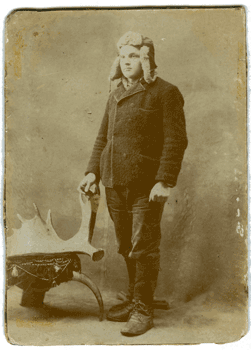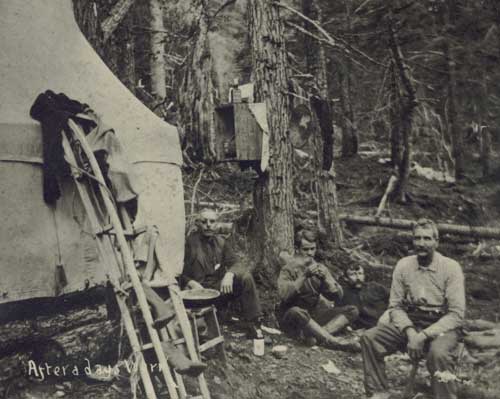

 "After A Days Work" Young James Leland Pape (top photo) followed his family and friend Gene Taylor to Henry Papes Gold Camp on Hunker Creek sometime before 1900. Left to right: Henry Pape, Gene Taylor, Donald Pape and Fredrick Pape. Photos courtesy of Gladys Pape Miller and Charlene Bronson. |